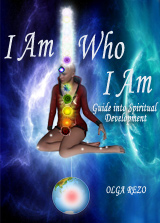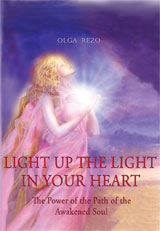
The Nature of Desires

The astral body (also called body of desires) transforms the vibrations received from the physical plane through the physical sense organs into sensations. What our sense organs do is essentially capturing the physical vibrations, so that they can be transferred to the brain. From there, the vibrations are transmitted to the etheric double, and then to the corresponding astral centers where they appear as sensations.
There are two types of sensations: mental observations and feelings. The neutral physical vibrations are usually reflected as mental observations. The sensations perceived by the mind as pleasant or unpleasant may be classified as feelings.
The pleasant sensations can be transformed into feelings of joy and delight, while the unpleasant ones into feelings of pain and suffering. Here we see the first fundamental change of consciousness. When we feel joy, a desire may arise in us demanding to take the necessary steps in order to feel that joy again. Similarly, when we feel pain, we may start to wish to avoid similar types of pain in the future. That is the appearance of desires in their simplest form. Attraction and repulsion are thus naturally attached to the astral and mental body, as both bodies possess natural recollection of the corresponding changes in consciousness.
In time, after numerous similarly accumulated recollections, our desires become ever more complex and begin to play a dominant role in our lives. We should try to understand the nature of our desires and clearly know where to press the brake and not let the changes in consciousness happen, so that we can have a full control over our desires.
For example, while eating food comes in contact with our sense of taste. It sets in motion the corresponding physical processes, which ultimately appear as separate sensations in the astral body. If the food is tasty, the resulting sensation is pleasant. When we finish eating, the pleasant sensation naturally disappears. There, however, remains a sort of a memory in the astral body and when we see that food again or even think about it, a desire may arise.
There are always external vibrations of various kinds. They may cause pleasant or unpleasant sensations. To free ourselves from the confines of our desires, we should be mindful of all changes that take place in our consciousness and prevent the feelings of attraction or repulsion from the very beginning. Most of our visual or auditory sensations, however, are neither pleasant nor unpleasant — they are just neutral perceptions of the mind.
If we haven’t learned the nature of our desires and we are not ready to control them, we will find ourselves enslaved and trapped between the attraction and the repulsion. All desires create attachments, confining us to the lower worlds.
When we go through experiences of pleasure or pain, if we do not allow the mind to make attachments, we will remain free. Of course, there is nothing wrong in going through the pleasant experiences of joy. This joy is a natural consequence of the contact between our body and the objects around us that make us feel good. The difficulties arise when we allow ourselves to be attached to any material object or process, either by attraction or by repulsion.
......
The ultimate desire one can have is achieving enlightenment. Achieving deep enlightenment usually takes many lives and much effort. We need to go through the process of building a strong character and live a pure life. This will perfect our lower nature and help us develop Divine capabilities. Assuming that our desire is strong and persistent, there is no doubt that sooner or later we will find ourselves free and enlightened.
We have already mentioned the irresistible power of execution that our desires, much like our will, carry along. Once we have purified our egoistic self, our desires and our will become virtually indistinguishable, they finally blend together.
......
This was an excerpt from the book I Am Who I Am by Olga Rezo.



















